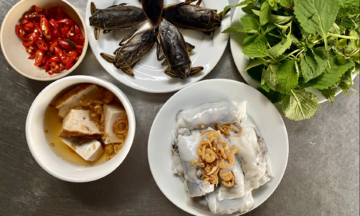Making dried bamboo shoots has long been a tradition in Ro Koi commune, Quang Ngai province. Wholesalers purchase forest bamboo shoots from June to August, with prices ranging from 6,000 to 7,000 VND per kilogram. The shoots then undergo several processing steps: boiling, slicing, pressing to remove excess water, and finally, drying in clay ovens.
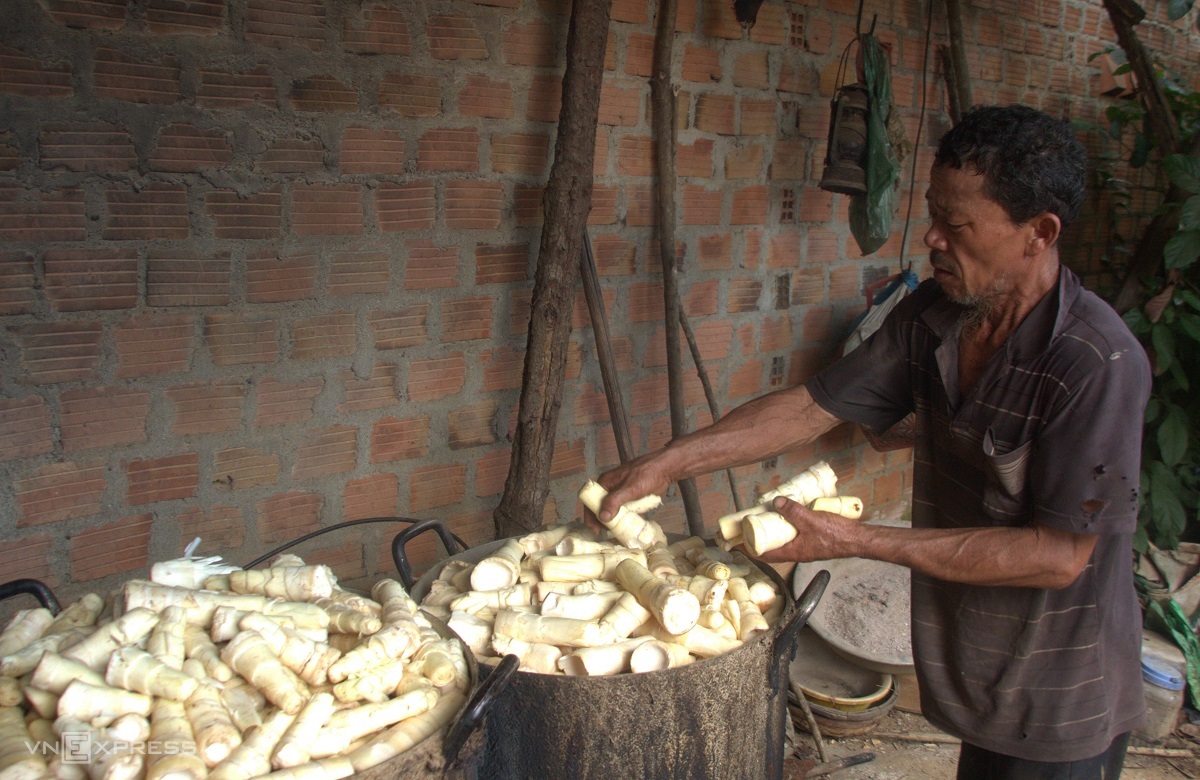 |
Fresh bamboo shoots are harvested from locally grown bamboo and sustainably collected from Chu Mom Ray National Park. Photo: Thao Vy |
Fresh bamboo shoots are harvested from locally grown bamboo and sustainably collected from Chu Mom Ray National Park. Photo: Thao Vy
First, the bamboo shoots are boiled over high heat for 20 to 30 minutes to ensure they are cooked thoroughly. After boiling, they are thinly sliced and placed in a basket. Once full, a large stone is placed on top to press out the water. Skillful slicing is essential to create thin, uniform pieces without crushing them.
The final drying stage determines the quality of the final product and depends heavily on the clay oven and the operator's skill. "This stage requires expertise in managing the fire and ensuring the oven is evenly heated throughout the drying process to prevent burning," says Tran Thi Loan, owner of a bamboo shoot drying facility in Kram village.
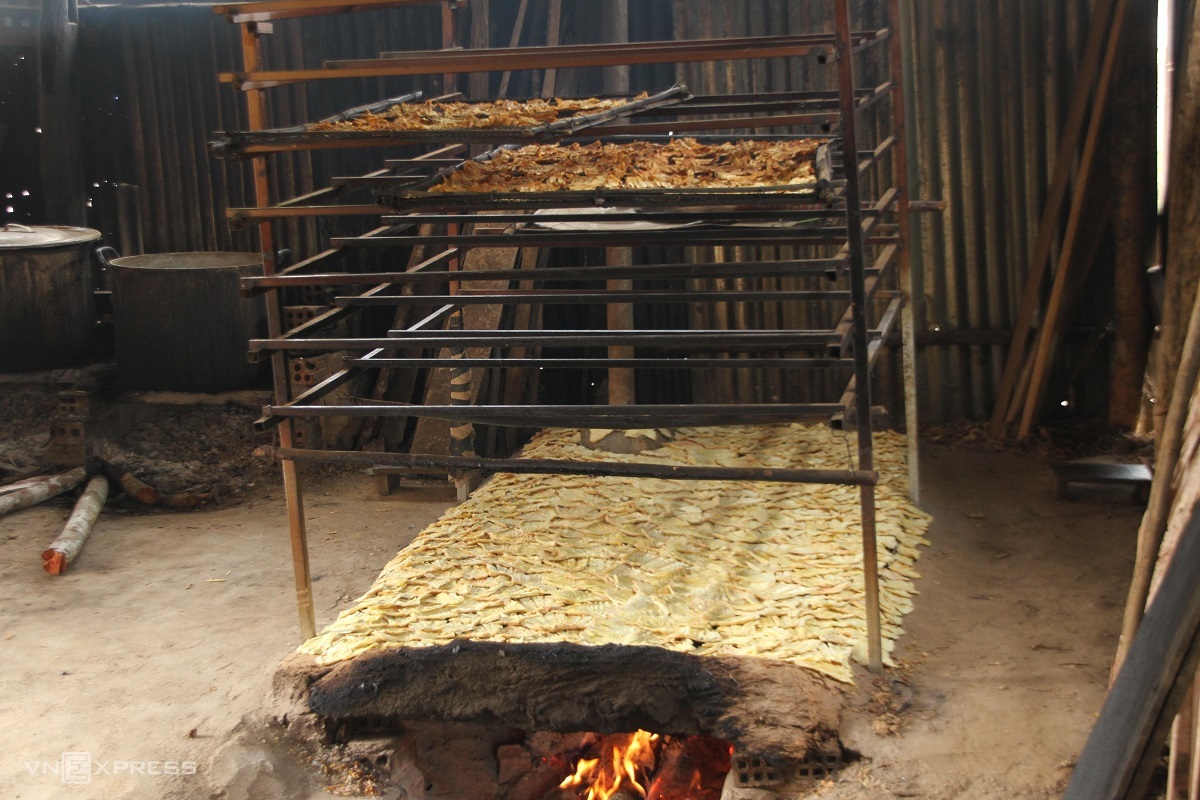 |
Tran Thi Loan's bamboo shoot drying oven. Photo: Thao Vy |
Tran Thi Loan's bamboo shoot drying oven. Photo: Thao Vy
According to Loan, each batch of bamboo shoots is dried directly in the oven for about 4 hours to achieve the desired level of dryness. They are then placed on racks above the oven's opening, using the rising heat to complete the drying process, or sun-dried for a natural golden color.
Nguyen Van Tinh, a veteran with over a decade of experience building drying ovens, explains the construction process. The oven frame is made of concrete pillars, the top lined with flattened oil drums. A mixture of carefully kneaded clay, sand, and straw is then plastered over the entire frame.
The oven is fired continuously for 2 to 3 days to ensure it is completely dry and durable before the drying season begins. "The sand used must be construction-grade sand to prevent cracking due to high temperatures during the drying process," Tinh adds.
The oven's opening is dug into the ground to a specific depth, facilitating both the burning of firewood and control over airflow and temperature. The design minimizes smoke to prevent discoloration of the bamboo shoots, which would affect their quality and appearance. Oven sizes vary depending on each household's resources and workforce, ensuring they meet production needs.
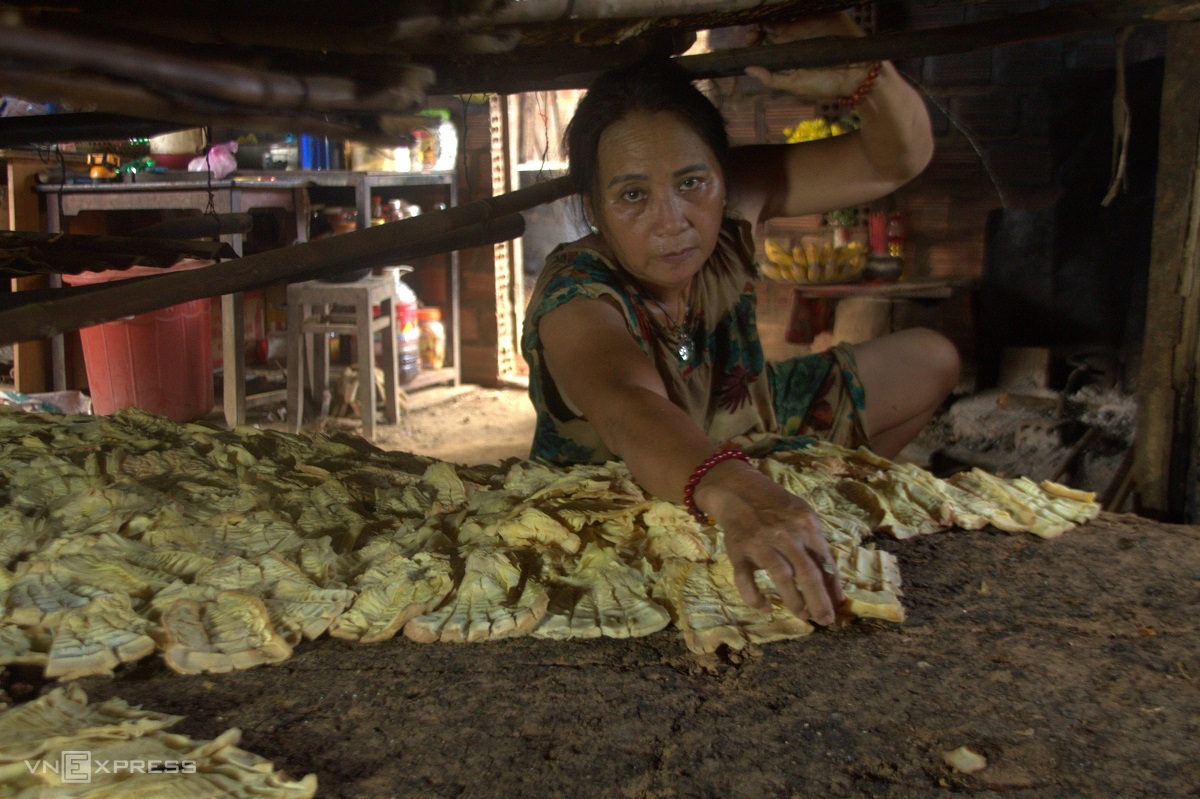 |
After boiling, the bamboo shoots are placed on the hot clay oven. Photo: Thao Vy |
After boiling, the bamboo shoots are placed on the hot clay oven. Photo: Thao Vy
This meticulous, chemical-free process preserves the original flavor of the bamboo shoots, earning the trust of the market and the preference of consumers. "Oven-drying preserves the unique chewy texture and sweetness of forest bamboo shoots," Loan explains.
The price of dried bamboo shoots ranges from 160,000 to 180,000 VND per kilogram, depending on quality and the season. Loan's oven produces about 21 kilograms of dried bamboo shoots daily, providing a stable income for her family.
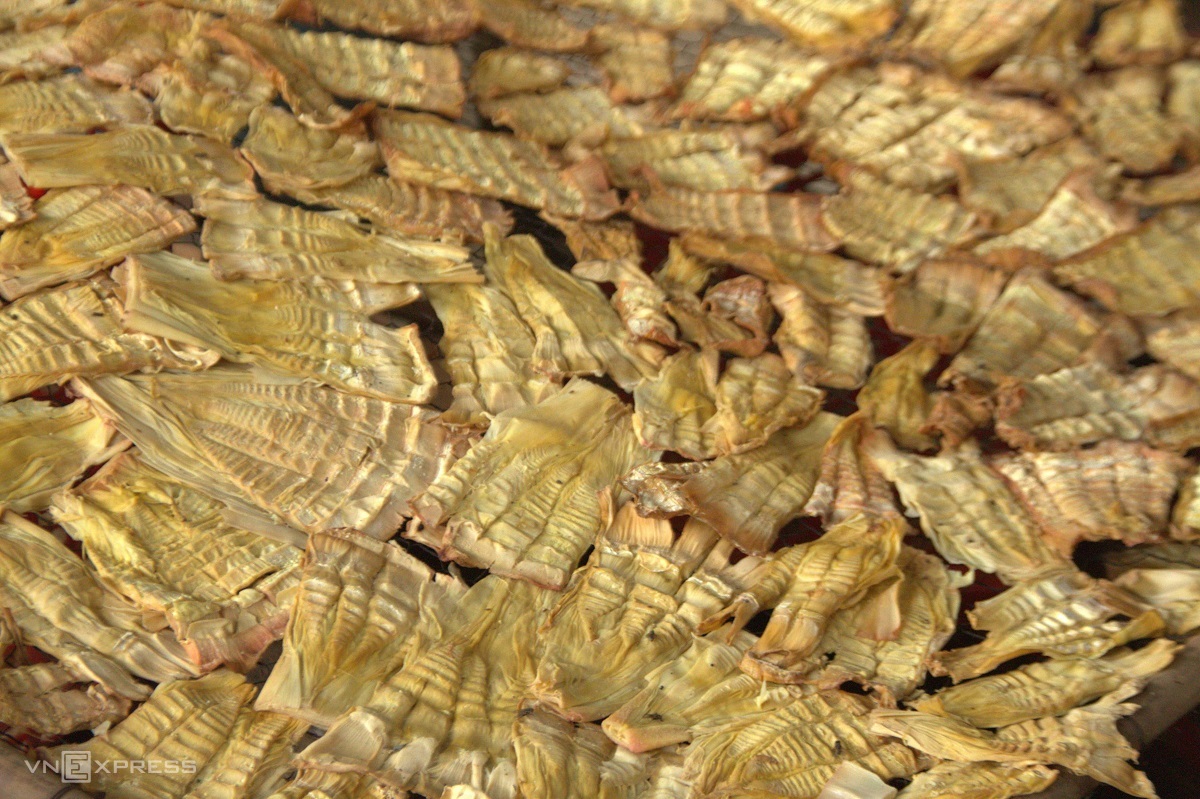 |
Dried bamboo shoots after oven drying. Photo: Thao Vy |
Dried bamboo shoots after oven drying. Photo: Thao Vy
Nguyen Minh Thuan, chairman of the Ro Koi Commune People's Committee (UBND), says the dried bamboo shoot industry began about 10 years ago with about 12 households. The product quickly gained popularity. The commune then encouraged the formation of the Thai Thanh cooperative with about 40 households to promote further development.
According to Thuan, the raw material is a native bamboo species cultivated by locals and sustainably harvested while protecting Chu Mom Ray National Park. The clay oven drying technique preserves the bamboo shoots during the rainy season, retaining their sweetness and distinct aroma. Many restaurants incorporate dried bamboo shoots into dishes like Ngoc Linh ginseng stewed chicken, enriching the culinary landscape of the Central Highlands.
"The clay oven drying of bamboo shoots creates jobs and income for residents. The product, now with improved packaging, has become a brand for the commune's agricultural sector," Thuan says.
Thao Vy











